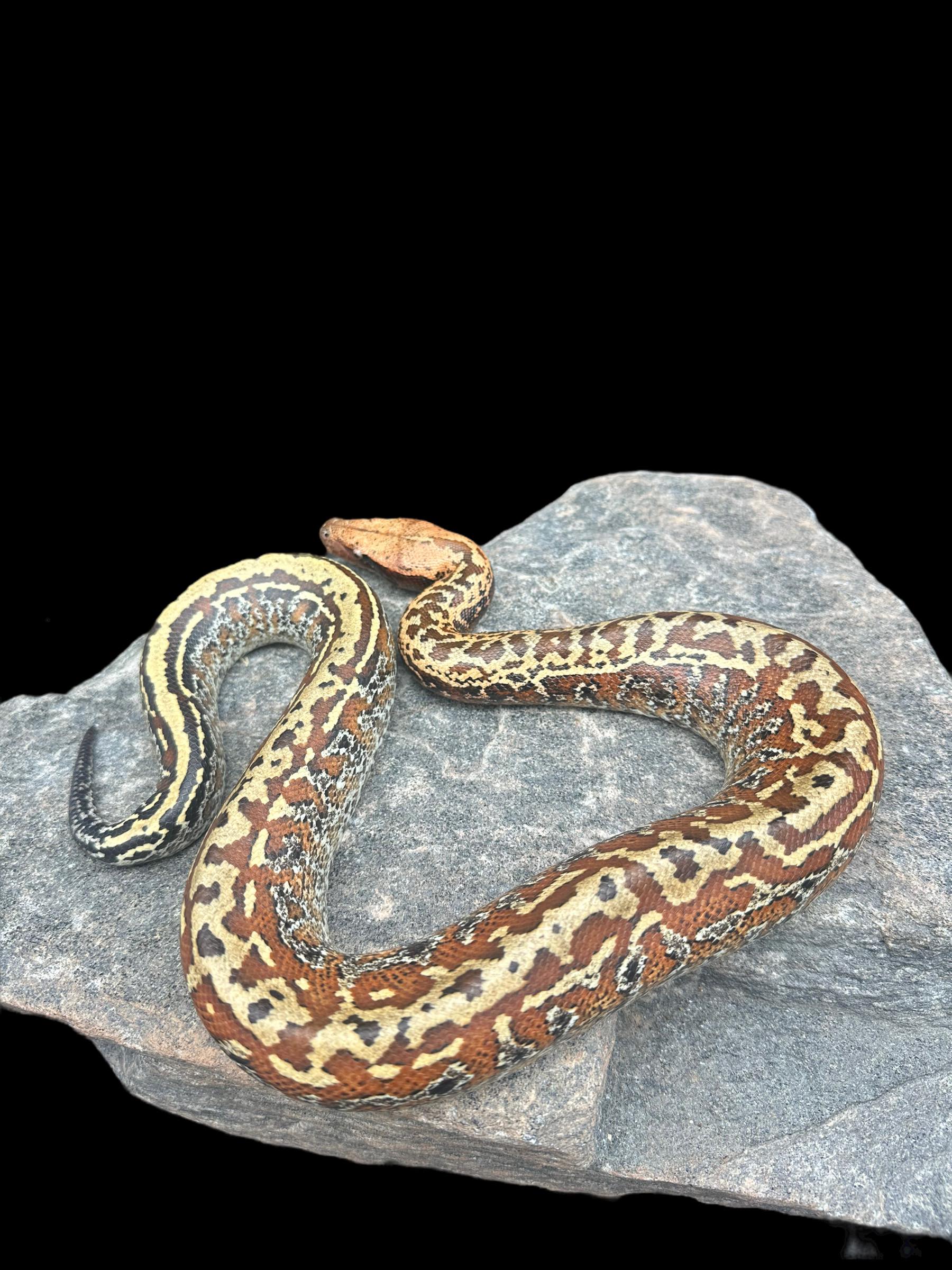Photo Disclaimer
Description
Blood Python (Batik 100% Het T+)
Python brongersmai
Common Names: Blood Python, Brongersmai Python
(Batik = co-dominant morph; T+ = Tyrosinase-Positive Albino, recessive morph, het form carried)
Species Overview
-
Size: Adults typically reach 4–6 feet (1.2–1.8 m), with females usually being heavier-bodied. Exceptional animals may exceed 7 feet.
-
Appearance:
-
Batik (co-dominant – visual): A highly recognizable morph, Batiks have a maze-like, pixelated pattern across their body. The head is often lighter with a distinctive stripe, and the body pattern appears “shattered” compared to the standard Blood Python.
-
T+ Albino (recessive – het form): This snake carries one copy of the T+ gene. When visual, T+ Albinos show caramel, golden, and chocolate hues in place of melanin-based black, often combined with striking lighter eyes.
-
The Batik 100% Het T+ combines the intricate Batik pattern with the genetic potential to produce Batik T+ Albinos, which are among the most striking Blood Python morphs.
-
-
Distribution: Native to Peninsular Malaysia, Sumatra, and surrounding islands.
-
Habitat: Commonly found in humid forests, swamps, and agricultural lowlands, preferring consistently moist environments with dense ground cover.
-
Behaviour: Blood Pythons are terrestrial ambush predators, preying on small mammals and birds. They are heavily bodied and rely on power rather than speed.
Captive Care
-
Enclosure: Adults thrive in enclosures around 4 ft × 2 ft × 1.5–2 ft, emphasizing floor space. Provide a snug hide, deep humidity-retaining substrate, and a large water dish for soaking.
-
Temperature & Humidity: Maintain a warm side at 86–88°F (30–31°C) and a cooler side around 78–80°F (25–27°C). Keep humidity at 60–70%, with boosts to 80% during shedding.
-
Diet: Juveniles can be fed hopper rats or similar prey every 5–7 days; adults typically consume medium to large rats every 10–14 days. Avoid overfeeding, as obesity is common in Blood Pythons.
-
Behaviour in Captivity: Captive-bred Batiks are generally hardy and adaptable, though they may be food-motivated and defensive when startled. With regular handling and proper husbandry, they often settle into reliable captives.
-
Special Considerations: These snakes do best in naturalistic, humid setups with deep substrate, which supports burrowing behaviour and hydration.
Genetics Note
-
Batik (Co-Dominant – Visual): Produces a maze-like, pixelated body pattern unlike any other Blood Python morph.
-
Super Batik (Homozygous): Breeding two Batiks produces the Super Batik, which has an extremely reduced and chaotic pattern.
-
T+ Albino (Recessive – Het Form): Carried here as one copy. When paired with another het or visual, this snake can produce T+ Albino Batiks, which display the Batik pattern overlaid with soft caramel and golden tones instead of black.
The Blood Python (Batik 100% Het T+) is a high-value project animal, combining one of the most visually unique co-dominant morphs with proven recessive potential, making it a cornerstone in T+ Albino Batik breeding projects.

